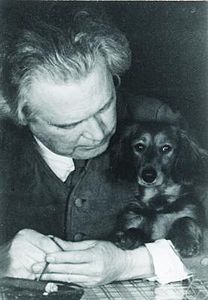
Gustav Herglotz
Mathematician, Academic
1881 – 1953
Who was Gustav Herglotz?
Gustav Herglotz was a German Bohemian mathematician. He is best known for his works on the theory of relativity and seismology.
Herglotz studied Mathematics and Astronomy at the University of Vienna in 1899, and attended lectures by Ludwig Boltzmann. In this time of study, he had a friendship with his colleagues Paul Ehrenfest, Hans Hahn and Heinrich Tietze. In 1900 he went to the LMU Munich and achieved his Doctorate in 1902 under Hugo von Seeliger. Afterwards, he went to the University of Göttingen, where he habilitated under Felix Klein. 1904 he became Privatdozent for Astronomy and Mathematics there, and in 1907 Professor extraordinarius. Here, be became interested in the theory of earthquakes, and together with Emil Wiechert, he developed the Wiechert–Herglotz method for the determination of the velocity distribution of Earth's interior from the known prorogation times of seismic waves. There, Herglotz solved a special integral equation of Abelian type. 1908 he became Professor extraordinarius in Vienna, and in 1909 at the University of Leipzig. From 1925 he again was in Göttingen as the successor of Carl Runge on the chair of applied mathematics. One of his students was Emil Artin.
We need you!
Help us build the largest biographies collection on the web!
- Born
- Feb 2, 1881
Volary - Nationality
- Germany
- Profession
- Education
- Ludwig Maximilian University of Munich
- University of Göttingen
- Died
- Mar 22, 1953
Göttingen
Submitted
on July 23, 2013
Citation
Use the citation below to add to a bibliography:
Style:MLAChicagoAPA
"Gustav Herglotz." Biographies.net. STANDS4 LLC, 2024. Web. 1 Jun 2024. <https://www.biographies.net/people/en/gustav_herglotz>.


Discuss this Gustav Herglotz biography with the community:
Report Comment
We're doing our best to make sure our content is useful, accurate and safe.
If by any chance you spot an inappropriate comment while navigating through our website please use this form to let us know, and we'll take care of it shortly.
Attachment
You need to be logged in to favorite.
Log In